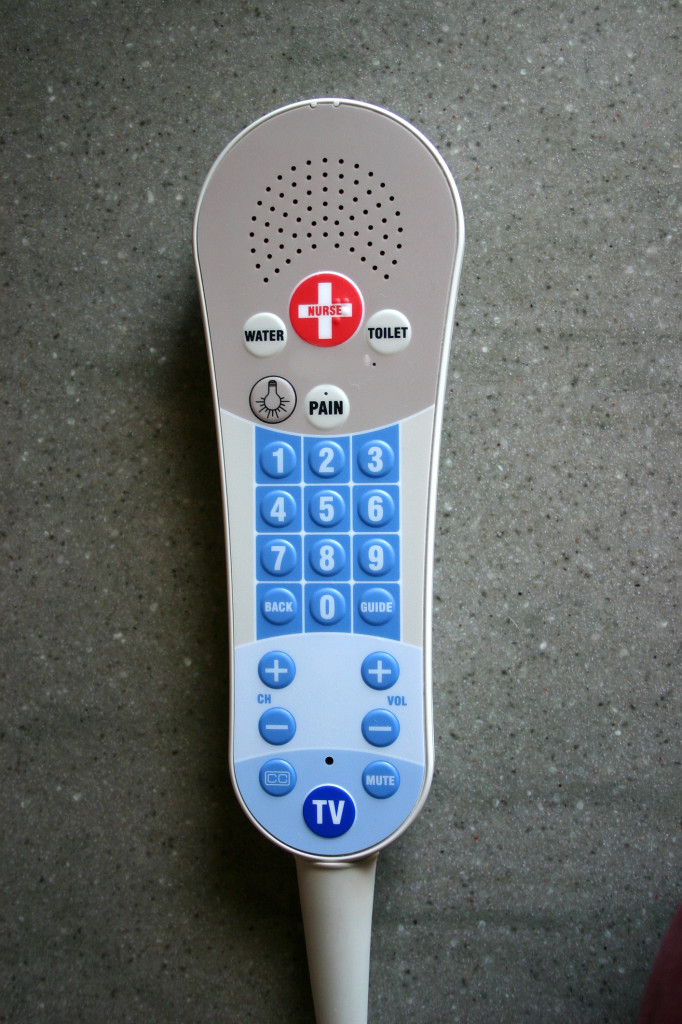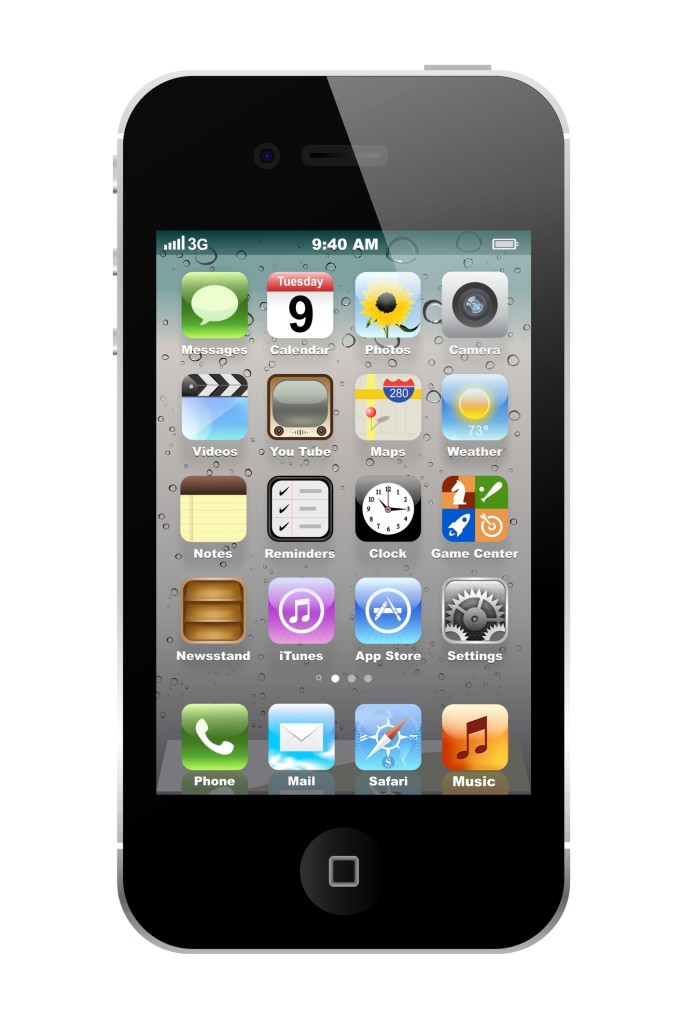You’re in the hospital (I’m sorry). You are likely uncomfortable. If you are awake and alone, you are potentially bored. You are informed and engaged. You want to participate in your own care. You buy into the entire patient engagement debate and you want to be part of the solution. Before coming to the hospital you have done your homework and researched your condition. In preparation for your stay in the hospital, you’ve researched your procedure and the recovery from it using the latest tools online. You have even installed a recovery app on your smartphone. It is day two of your hospital stay.
The hospital in which you’re staying is busy, crazy busy — like almost every hospital these days. The nurses (there seem to be about 57 at last count) whip in, whip out. Everyone is courteous and quick, but there are a lot of them, and each seems to have a heavy workload and a very tight schedule.
You need to ask a question of one of these nurses. It’s not really a “right now” question, though. Let’s say you’re just curious about something like, “When will you be coming in to take my vitals again?”
Now to accomplish this communication task, I’m going to give you two options:
Option 1: You use this flashy gizmo to call the nurses desk:
Option 2: Or you can use this thing:
Now, before you answer, let me give you some stats:
- There is a greater than 50% chance that you already own and are intimately familiar with one of them (or a similar device).
- There’s a 79% chance that you use one of them to send short text message like this current question people.
- There’s a greater than 30% chance you’ve used one of them to look up health information.
- If you have one, you use one of them at least one hour a day.
- 200 million of you use nothing but one of these to access your social network of choice.
Unfortunately, it’s a trick question. Chances are very good that you won’t be given the second option — at least not for a while. Now there are progressive hospitals that are offering something like this for their clinicians, but very few offer this option to its patients. This is very interesting given the literally tens of thousands of apps pushed at patients for use outside the hospital. I mean, hospitals want to engage patients, right? They’re getting hammered from almost every angle that if they don’t start engaging patients more, Western civilization may fail. This is a big deal. No one in healthcare has not heard about patient engagement. The ability to let patients use their cellphones seems like a pretty simple way to engage patients:
“Mr. Smith, I see you brought your smartphone. Good news. You already know how to interact with every member of the hospital. Just install this app and…”
And if CMS’ financial incentives for patient engagement aren’t enough, there’s the simple fact that the only technology platform that is 100% guaranteed across this patient’s continuum of care is the one sitting in her purse. As an industry, we’re being forced to figure out how to care for patients across this continuum. And using a hospital-owned system to solve this platform challenge is at best hubris and more likely foolishness. Who pays for that? How does it work? ACOs might help with this issue but there seems to be a steep learning curve there and it far from solves the problem 100%.
We need a way to engage patients across the continuum now, not some time in the future. We need to get patients healthy quickly and keep readmissions low. We have to engage them throughout the process. The patient’s own device is with them throughout. Why not leverage it with more engagement capabilities throughout, preferably with solutions that foster the healthcare communication across that continuum. Seems like patient-owned mobile devices are the perfect solution to this problem.
And some aspects of this continuum are being addressed. But how many apps do you know of right now that engage the patient in the acute care setting — arguably, the most critical place to get patient engagement, right? I’d guess fewer than 10 and none of major name recognition. This seems a travesty. We expect patients to learn all they can about their condition ahead of time and this often means using a mobile device to do so. We expect them to monitor everything from calories to glucose levels to fertility using their devices. We want to give them cool apps on how to recover once they leave acute care settings. But then when the patient is admitted, it’s this “remote-control-looking” thing that calls the nurse’s desk and changes channels (all four of them). For anything else, ask a nurse. No, you won’t need that fancy smartphone here.”
Uh. What?
Chances are good that you’ve never even heard this question raised. Patient engagement is a very young “art” (and no, I don’t mean “science”). We’ve a long way to go to understand how best to integrate patients into their own care. We are a long way from understanding this. But it’s crazy to assume that patients will use mobile devices throughout their care settings except while inside the hospital. That’s silly.
So while you’ve maybe not heard anything about patients and their use of mobile devices while inside the hospital, you will. I promise. You may think the debate raging over physicians using their own devices was a big deal. I predict that will be peanuts in comparison. Patients are already getting engaged in their healthcare. Many hospitals, most EHRs and almost every commercial patient portal has a mobile access method so patients can look up information on their mobile device. Patients are already using these to do things like figure out where to park and to see their pre-screening test results. But few, if any, have anything to do with the actual workflow while they’re in the hospital. And it’s not like they’re not using devices while in the hospitals; far from it. Patients are bringing mobile devices more than ever. I recently spoke with someone at Cleveland Clinic who indicated that after clinical questions the most common patient question was, “Where can I plug in my X mobile device?”
As with most of these types of innovations in thinking, there will be resistance to the idea of patients using their own mobile devices. A side bet, I predict that the arguments against patients using their own mobile devices inside the acute care space will go like this:
- Security! Privacy! Security! Privacy! This has already started to some extent but vendors are (slowly) beginning to answer that call. That argument won’t last long.
- Infection Control! Yes. This is an important issue and we need to address it. But this argument didn’t last against using computers in exam rooms. I don’t expect it to last against patient devices either, despite the lack of control hospitals have over these devices. Again, patients are already bringing these devices in. Whether you engage them in the workflow or not, the infection issue is already there. Might as well leverage the device.
- OK Already. We’ll give the patients hospital-owned tablets, etc. Nice idea. Probably a decent interim solution but misguided in the long term, in my opinion. Patients already know how to use their devices and don’t want to learn yours, less so while their health is compromised. I worry about this one because I predict patients won’t use hospital-provided devices and the naysayers will indicate this as support for the argument to ban patient devices.
I believe all these will slow the integration of the patients’ devices into the acute care workflow but none will stop it. Between the push to engage patients from the side of healthcare and the push to adopt mobile technologies from everywhere, patients will begin to demand more and more use of their mobile devices in more and more settings and this means in the hospital too.
I can’t wait. I can imagine a time in the not so distant future that patients use their own smartphone or tablet to ask:
- Questions of their nurses or doctors
- About food from the cafeteria
- To speak with a midwife/chaplain/social worker
- For housekeeping
- About their room
- About where to plug in their smartphone
The first round of these will likely be pretty mundane but with their integration into the process, innovation will surely follow.
So get ready. And patients? BYOD…







3 Comments
A very thoughtful perspective… I can think of another argument for healthcare institutions needing to get ahead of this trend – “controlling the message.” Keyton notes that patients are already using their smartphones to look up information. In my experience assisting providers with patient education content, it has been described how they dread the patient who walks into a facility with a stack of their own internet-based research. Kudos to the engaged patient! Wag of the finger to the provider who did not preemptively meet the need for that information!
In Keyton’s example, that vital signs schedule, along with educational hyperlinks, could easily reside in a hospital’s app on that patient’s smartphone. You, the uncomfortable patient, would then know that every two hours you will be further annoyed when the nurse sticks a tympanic thermometer in your ear to take your temperature. Clicking on the “temperature” hyperlink you’ll learn that they are watching to ensure that you don’t have any suggestion of an infection from your surgical site. Knowing your vital signs schedule, what they are doing, and WHY they are doing it, you can now connect your headphones, listen to some classical music, and be prepared to take one earbud out in another…30 minutes or so.
Here’s an even *better* idea. Forget the iPhone (too expensive) – but what if hospitals GAVE patients a pre-loaded smartphone – with WiFi and a one year data plan?
You may recall my piece from earlier this year – Hospital Calculates The ROI Of An iPad At 9 Days ( http://hc4.us/iPadROI ). If the ROI for an iPad is 9 days – what’s the ROI of a cheaper device in the hands of a patient – and shouldn’t we know that? I’ll bet it would help with both hospital stays – and readmission’s.
As Keyton correctly highlights here – we ALL need to change our thinking!
It’s really uncomfortable being in the hospital so it’s nice that there is something that the patient can enjoy.
2 Trackbacks